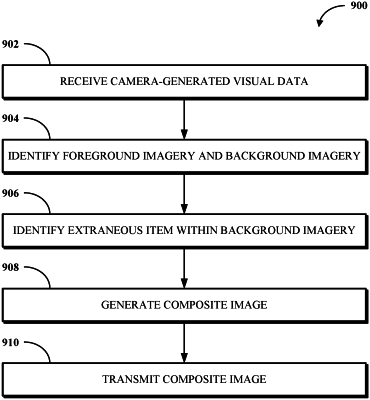| CPC H04N 5/272 (2013.01) [G06T 11/00 (2013.01); G06V 20/41 (2022.01); G06V 40/161 (2022.01); G06T 2200/24 (2013.01); G06V 20/48 (2022.01); H04L 65/403 (2013.01)] | 20 Claims |

|
1. A method, comprising:
receiving, during a video conference to which a client device is connected, camera-generated visual data for output to at least one remote device participating in the video conference;
identifying, using software-based image processing applied to the camera-generated visual data, foreground imagery representing a participant and background imagery representing content of the camera-generated visual data other than the foreground imagery;
identifying, within the background imagery, an extraneous item for removal, wherein the extraneous item comprises a portion of the background imagery;
determining whether to generate a composite image at the client device or at a server based on capabilities of the client device, wherein the capabilities comprise at least one of processing capabilities, memory capabilities, network access capabilities, software capabilities, and hardware capabilities, wherein the hardware capabilities are related to item recognition technology;
generating the composite image by removing the extraneous item from the camera-generated visual data and predicting, using replacement imagery prediction software, replacement imagery to replace the removed extraneous item; and
transmitting the composite image to the at least one remote device during the video conference.
|